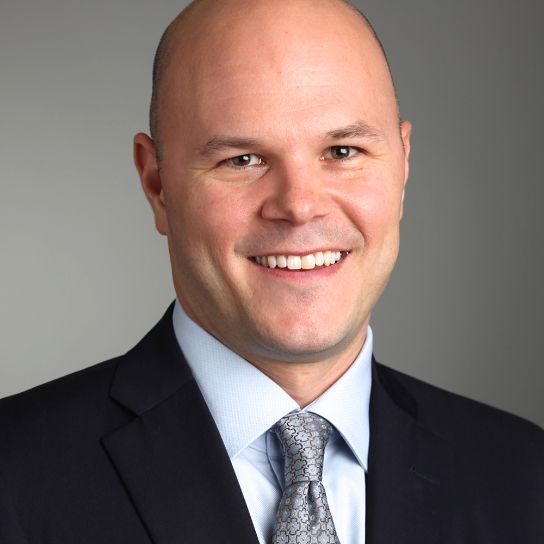Recent comments made by Sam Woods, CEO of the PRA, about the PRA's approach to supervision are worrying. A speech prepared for this year's Building Societies Annual Conference (but not actually delivered) is relevant to all authorised firms, not just building societies. Parts of the speech are specifically directed at insurers.
|
In summary:
|
We consider below the implications of Mr Woods' comments for insurers, including the PRA's apparent objection to the redesign of unit-linked products to reflect new contract boundary rules set by Solvency II. The speech was not delivered in May, because of election purdah, but was published by the PRA in July.
Approach to supervision
The PRA has previously referred to its intention to supervise firms according to the "spirit" of the regulatory regime, without expressly suggesting that this would be sufficient as a basis for enforcement proceedings. Its apparent willingness to challenge behaviour which does not meet the "spirit" of the rules even though it is "compliant with the letter of the regulation" (the words used by Mr Woods) does not, however, draw this distinction. Of course, for all practical purposes insurers are interested only in the supervisory approach. It is no real comfort to them that formal enforcement proceedings might properly recognise the constraints of EU law if on a day-to-day basis the PRA adopts a gold-plated approach to supervision.
For insurers, the PRA's expectation appears to go beyond taking the purposive approach to Solvency II legislation that is followed by the ECJ. It also appears to go beyond drawing on relevant EU guidance and the wider acquis to understand how the legislation is intended to apply. Mr Woods argues that insurers hoping to amend product terms to achieve a particular outcome under the new Solvency II rules on contract boundaries must be prepared to defend actions which may meet the letter of the regulation (i.e. they are compliant with the rules) but which "are designed to circumvent the spirit".
Specific comments made by Mr Woods that relate to the contract boundary under Solvency II are discussed below. We think the broader approach to supervision described in Mr Woods' speech raises particular concerns, however, when UK rules implement a regime developed and adopted by the EU. In particular:
- The text of EU legislation and EU principles of interpretation determine the meaning of that legislation.
- It is not open to the PRA to apply a different interpretation of the legislation or to overlay the EU meaning with its own judgement.
- Where EU legislation is intended to be maximum harmonising (as is the case for Solvency II), the position is even clearer. Member States are not entitled to set standards that differ from, or go beyond, the rules that have been set by the EU.
For the PRA to discuss its approach to supervision without mentioning these fundamental principles of law is, in our view, disappointing.
When firms interact with the PRA on prudential issues arising under Solvency II, the absence of any realistic practical way of challenging the PRA's approach makes it particularly important for firms that the PRA's approach is justifiable in law.
Judgement-based supervision vs maximum harmonisation
According to Mr Woods, "supervision cannot be a narrow, tick-box, compliance exercise". Instead, the PRA's supervisory approach "relies on a healthy dose of judgement".
Throughout its life, the PRA has made much of its judgement-based approach to insurance supervision. As an approach, its effectiveness depends on supervisory teams being staffed by individuals with the right expertise and experience of the insurance sector. Equally important, however, is a supervisory framework that gives supervisors the flexibility they need to deal with risks effectively and that does not place unnecessary limits on what they can do.
There is a clear tension, therefore, between judgement-based supervision and EU legislation that is maximum harmonising. The same tension exists more widely with the PRA's overall approach based on "Fundamental Rules" supplementing specific rules derived from EU legislation. Until the UK has completed its exit from the EU, the PRA is bound by the constraints of the Solvency II regime irrespective of whether this undermines its ability to deal with issues flexibly. It cannot simply rewrite, or interpret, the EU legislation in a way that suits it better. Changes need to be negotiated within the relevant EU forum and cannot be made unilaterally by a dissatisfied Member State.
The shape of UK regulation and the PRA's powers after Brexit remain to be defined but changes to the rules at that point, or subsequently, should be the subject of the normal UK consultation process.
The fact that this is understood by the PRA seems to be evident whenever it discusses the possibility of relaxing undesirable aspects of the Solvency II legislation – see, for example, its evidence to the Treasury Select Committee in its investigation of Solvency II. It seems much less evident when the PRA is considering whether it can, through its supervisory approach, impose more onerous regulation – whether in this speech or in its "Approach to Insurance Supervision" (which mentions "spirit" on no fewer than five occasions).
"Gold-plating"
In January 2015, Paul Fisher, then Deputy Head of the PRA, said the following:
"We … recognise and respect that Solvency II is a maximum-harmonising Directive with a key objective of promoting supervisory co-operation. The PRA is committed to upholding this valued objective and will implement the Directive as intended. We can’t and won’t gold plate."
The PRA has repeated this message on other occasions. Despite this, the approach to contract boundaries described by Sam Woods in May, and the invocation of the "spirit of the regulations" more generally, can only be described as "gold-plating". It is not open to the UK, as a matter of law, to set higher standards than are prescribed by the Solvency II regime.
In the context of Brexit, there has been a great deal of speculation about whether the PRA will relax aspects of the Solvency II regime once it is free from EU constraints. Firms should, however, recognise that the PRA may also take the opportunity to impose higher regulatory standards once it is no longer bound by the requirements of maximum harmonisation.
Fundamental Rules
Similarly, Mr Woods argues that the PRA's Fundamental Rules aim to "bake" the spirit of the law into the letter of the regulation. However, the PRA is not entitled to apply the Fundamental Rules in breach of EU law and should not read its statutory objectives set by the UK Parliament as giving it authority to do so.
Contract boundaries
According to Mr Woods:
- Some innovation by firms is "pure regulatory arbitrage" – that is, action taken to reduce specific regulatory requirements without any commensurate reduction in their risk.
- Changes to insurance products in order to extend the contract boundary "might meet the letter of the regulation, but they are designed to circumvent the spirit".
- In most cases seen by the PRA, amendments have involved "the addition of free marginal insurance benefits that are of questionable value to policyholders and which are (arguably) not economically discernible".
- Firms are failing to recognise the additional risks that such proposals to amend contracts carry.
Whether the comments in the third proposition above are correct in any given case will, of course, depend upon the particular changes that are proposed to be made to the policy. It also goes without saying that, where the addition of benefits to a unit-linked policy introduces risk, that risk must be recognised according to the rules in Solvency II.
In our experience, there are circumstances where the additional benefits proposed to be provided to policyholders do have a discernible value, as is required under the relevant EU regulation and EIOPA guidance on contract boundaries. The guidance and associated EIOPA Q&A recognise this possibility and should be taken into account by the PRA consistent with its obligation to "comply or explain".
There is also a good argument that insurers are simply reversing an unrealistic aspect of the Solvency II legislation which puts all future premium payments under unit-linked policies outside the contract boundary, notwithstanding that this treatment is far from economic reality. It is far from clear why this sort of proposal is one which the PRA feels it must challenge or, indeed, why it is the best insurance-related example it could find to illustrate the wider point which is made by the speech.
The fact that firms are choosing to adapt products to ensure that a more realistic economic outcome is recognised under the Solvency II regime, consistent with the rules, should also not be susceptible to challenge simply because the PRA disagrees with how the boundary is drawn in the legislation. This is not regulatory arbitrage but applying the rules as they were intended. The PRA should be required to do the same, irrespective of any concerns it might have about the quality of capital resulting from the extension of the contract boundary.
Key contacts
Legal Notice
The contents of this publication are for reference purposes only and may not be current as at the date of accessing this publication. They do not constitute legal advice and should not be relied upon as such. Specific legal advice about your specific circumstances should always be sought separately before taking any action based on this publication.
© Herbert Smith Freehills 2024



